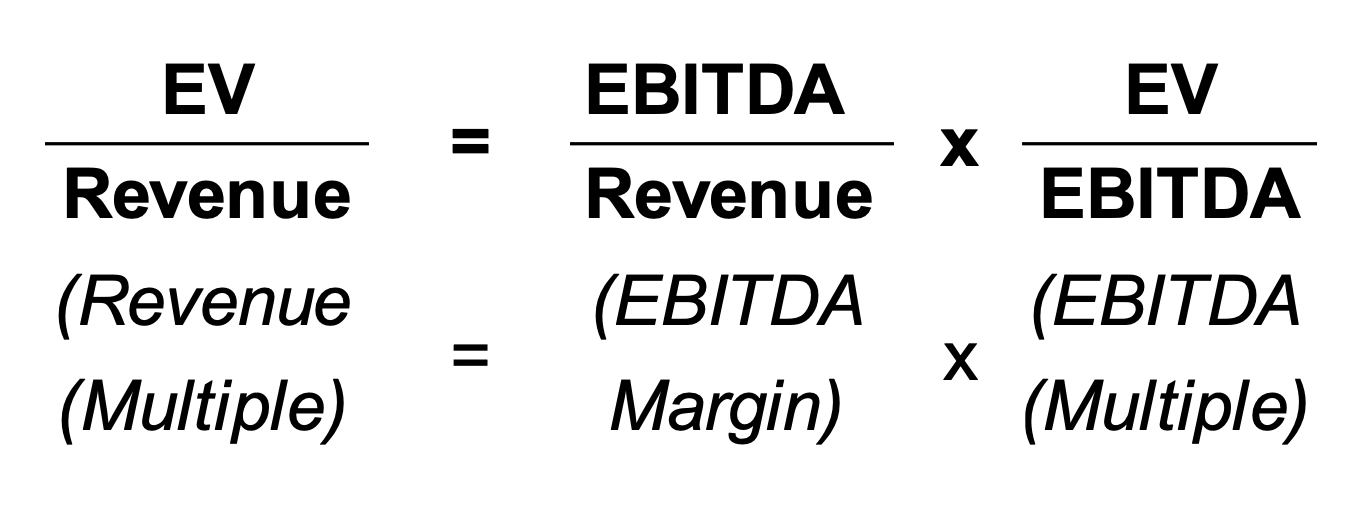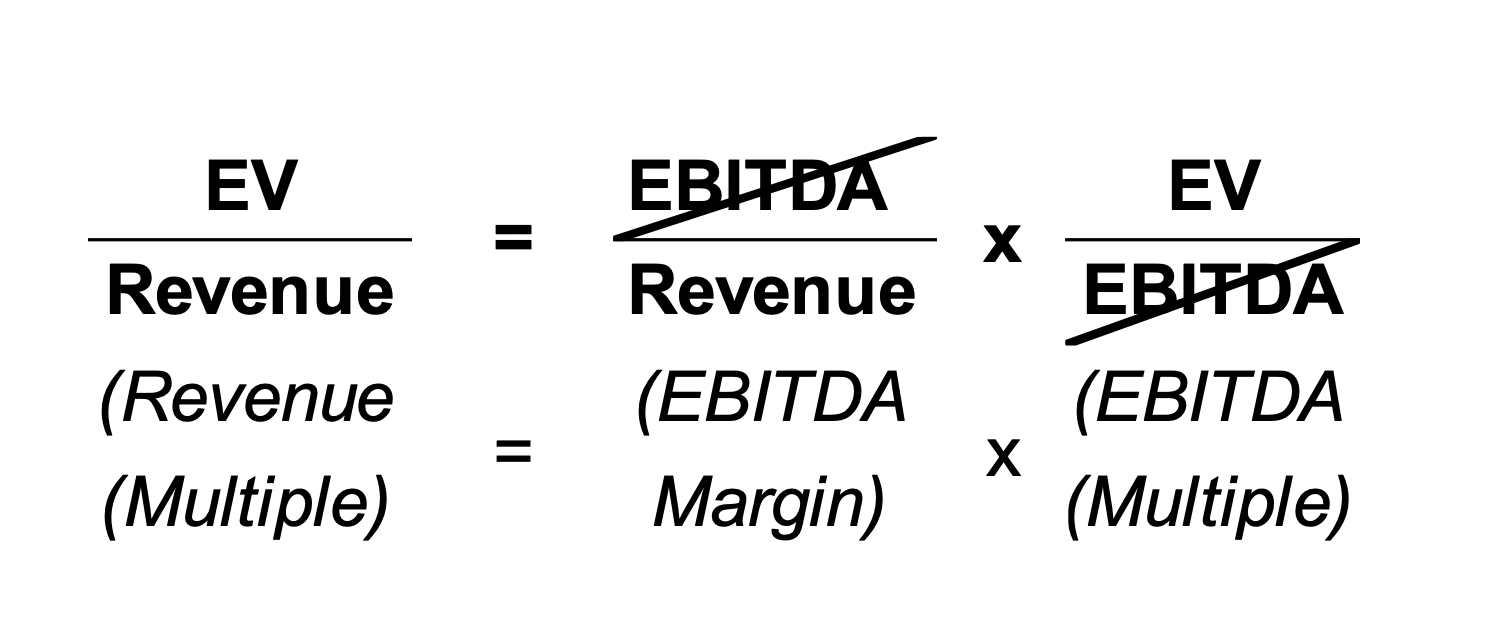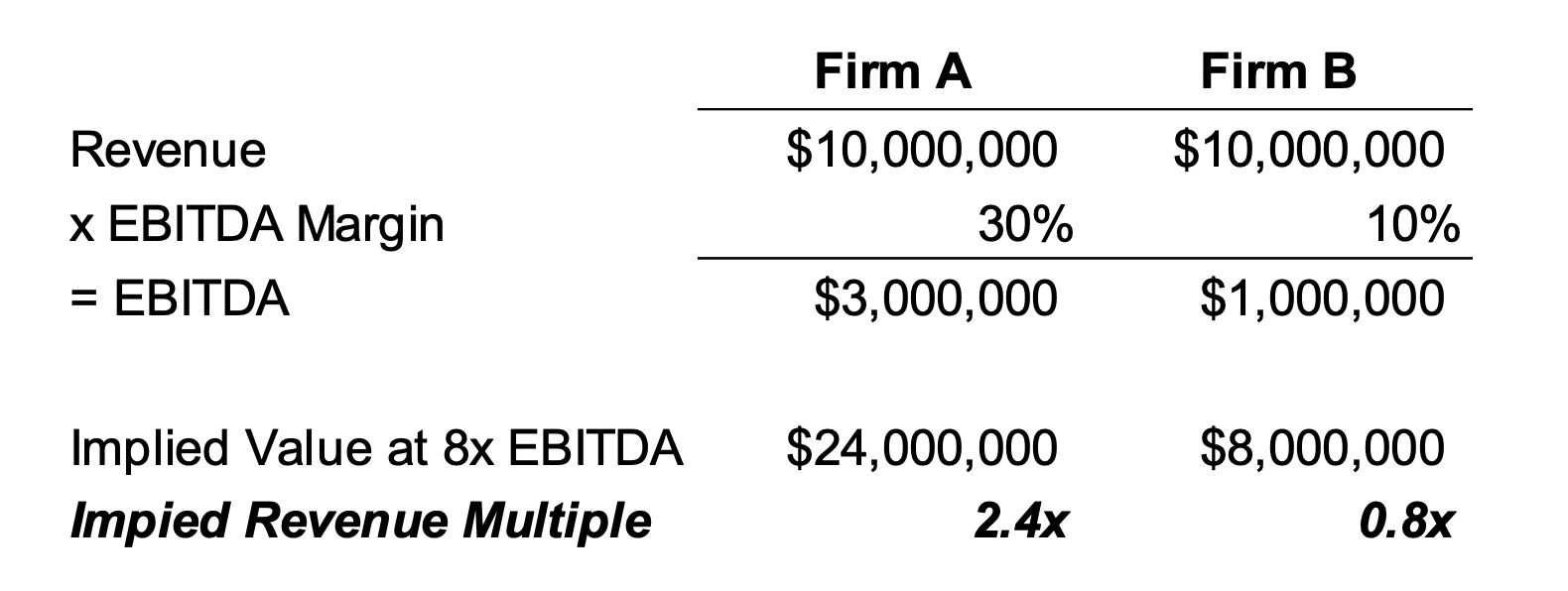The Relationship Between Revenue Multiples and EBITDA Margins
Revenue multiples are cited perhaps as much as any other valuation metric in the RIA industry. In this week’s post, we focus on their key drivers and ways to improve the value of your management fees.
Whenever someone asks me what their RIA is worth as a multiple of revenue, I respond by asking about their firm’s EBITDA margin. My response is largely driven by the math behind the enterprise value (EV) to revenue ratio. The revenue multiple can be decomposed like this:

Thinking back to your pre-algebra days, the EBITDAs on the right side of the equation cancel, such that the revenue multiple (EV divided by revenue) is simply the EBITDA margin (EBITDA divided by revenue) times the EBITDA multiple (EV divided by EBITDA):

From a more practical standpoint, a dollar of revenue is worth more when it yields higher returns (earnings) to capital providers (all else equal). Investors will pay more for an RIA’s revenue when there’s more cash flow behind it.
This reality is why we see such disparity in the multiples paid for investment management firms. Take two RIAs with the same level of revenue but different expense structures and EBITDA margins. Firm A has mostly high-net-worth clients serviced by a few advisors with minimal support staff and overhead. Firm B has a higher number of mass affluent clients with more headcount and office space to support them. Naturally, Firm A is more profitable.
Let’s see what their implied revenue multiples are assuming the same EBITDA multiple valuation:

Firm A’s revenue multiple is three times that of Firm B’s strictly because of the disparity in profitability. We’ve seen even wider ranges of revenue multiples, and it’s usually attributable to differences in the margin.
If you’re an RIA principal looking to improve the value of your management fees, you can either enhance your firm’s profitability or look for ways to bolster your firm’s EBITDA multiple in the marketplace. Since the EBITDA multiple is primarily a function of risk, growth, and market conditions that are largely outside your control, the path of least resistance is probably margin improvement. (Though we acknowledge the difficulties of enhancing your bottom line when markets and AUM are falling while inflation swells your compensation costs and overhead expenses.)
The takeaway is to focus on what you CAN control—hiring practices, new business development, incentive compensation structure, operating efficiencies, and cost controls. As the last year has proven, you can’t always rely on a market tailwind to lift AUM and revenue. Developing new business in a cost-efficient manner will increase margins and profitability in almost any market environment. It will also improve your revenue multiple and value by extension.
About Mercer Capital
We are a valuation firm that is organized according to industry specialization. Our Investment Management Team provides valuation, transaction, litigation, and consulting services to a client base consisting of asset managers, wealth managers, independent trust companies, broker-dealers, PE firms and alternative managers, and related investment consultancies.
 RIA Valuation Insights
RIA Valuation Insights 





